The world’s smallest migrating bird, catching sight of a tiny colourful hummingbird is an incredible wildlife spectacle.
Named after the humming noise their wings make in flight, the hummingbird is the only bird species which can fly backwards which comes in handy when feeding on the nectar of plants and insects.
Living in the Americas, the most common hummingbird seen in the United States is the vibrant ruby-throated hummingbird Archilochus colubris.
Learn more about hummingbirds in our expert guide which looks at the different hummingbird species, diet and where they live in the wild.
How many hummingbird species are there?
There are over 350 known hummingbird species, with new species being described every year. There also used to be another two species of hummingbird that have gone extinct since they were first discovered in the 19th century. Hummingbirds are their own family, known as Trochilidae.

Where do hummingbirds live?
All hummingbird species can be found in the Americas. Of the remaining hummingbird species, only eight regularly breed in the United States - the vast majority live further south in the tropics in Central and South America and the Caribbean countries.
The most well-known species in the US is the ruby-throated hummingbird Archilochus colubris.
Where does the word 'hummingbird' come from?
The hummingbird family name, Trochilidae, derives from the Greek word that Aristotle used for a small bird (probably the species we now know as the European wren).
Even that little creature, a feathery ball that tips the scales at 8–12g, looks like a hunk in this company. Most hummers are in the 2.5–6.5g range, and the smallest, the bee hummingbird of Cuba, weighs just 1.6–1.9g (little more than a standard paperclip).
It is dwarfed by many insects, and half of its total length of 5.5cm is bill and tail. Its dainty nest measures barely 2.5cm across; its eggs are smaller than coffee beans.
What do hummingbirds eat?
Hummingbirds eat a diet of nutrient-rich flora nectar, sap and insects. Insects eaten include spiders, insect eggs and other small insect species which all provide essential protein and energy.
How much does a hummingbird weigh?
Hummingbirds come in all sorts of shapes and sizes, but none of them are heavy. An average hummingbird might weigh around 4g, but could fatten up to a relatively impressive 8g before heading off on migration.
The smallest hummingbird of all is the bee hummingbird, which is actually the smallest bird of any kind. A male bee hummingbird is only a little over 5cm long and weighs less than 2g, not even half the weight of a nickel.
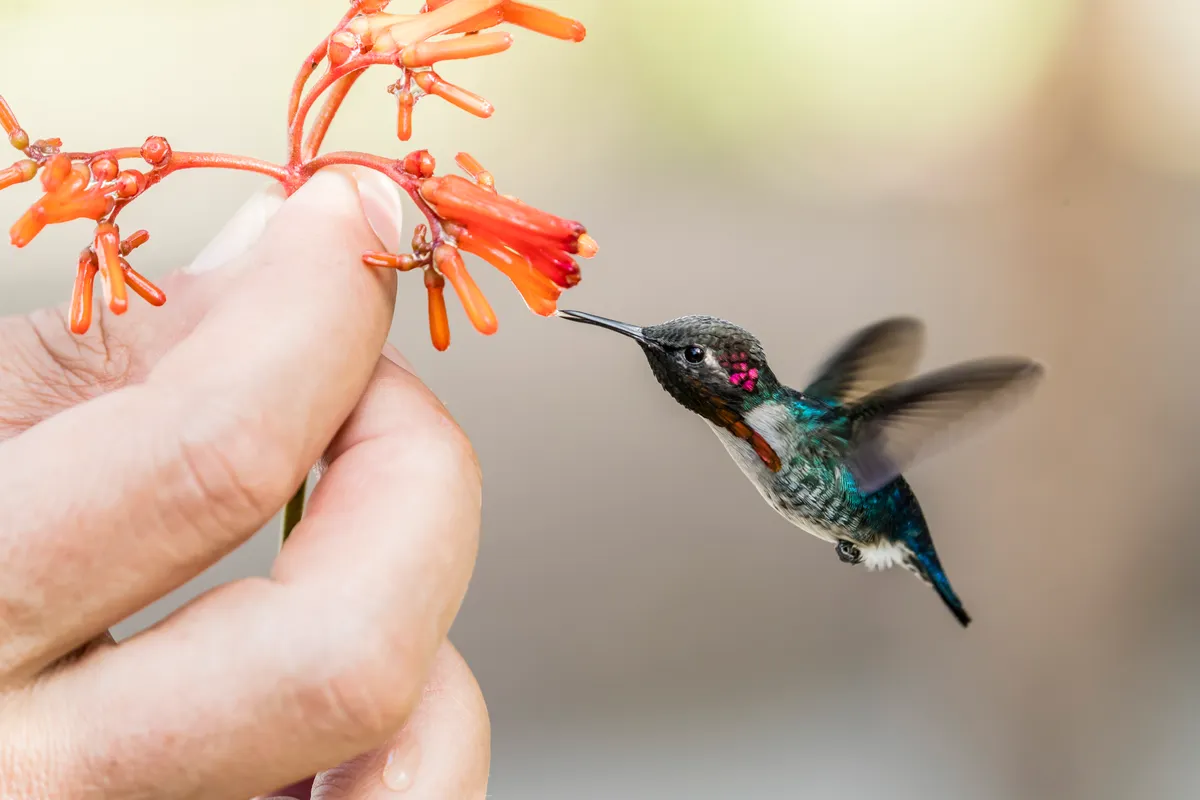
At the other end of the spectrum is the giant hummingbird at around 23cm long and weighing roughly 20g, ten times more than the bee hummingbird.
There are plenty of hummingbirds in between, and some of them are really odd. The sword-billed hummingbird even has a beak that's longer than its body!
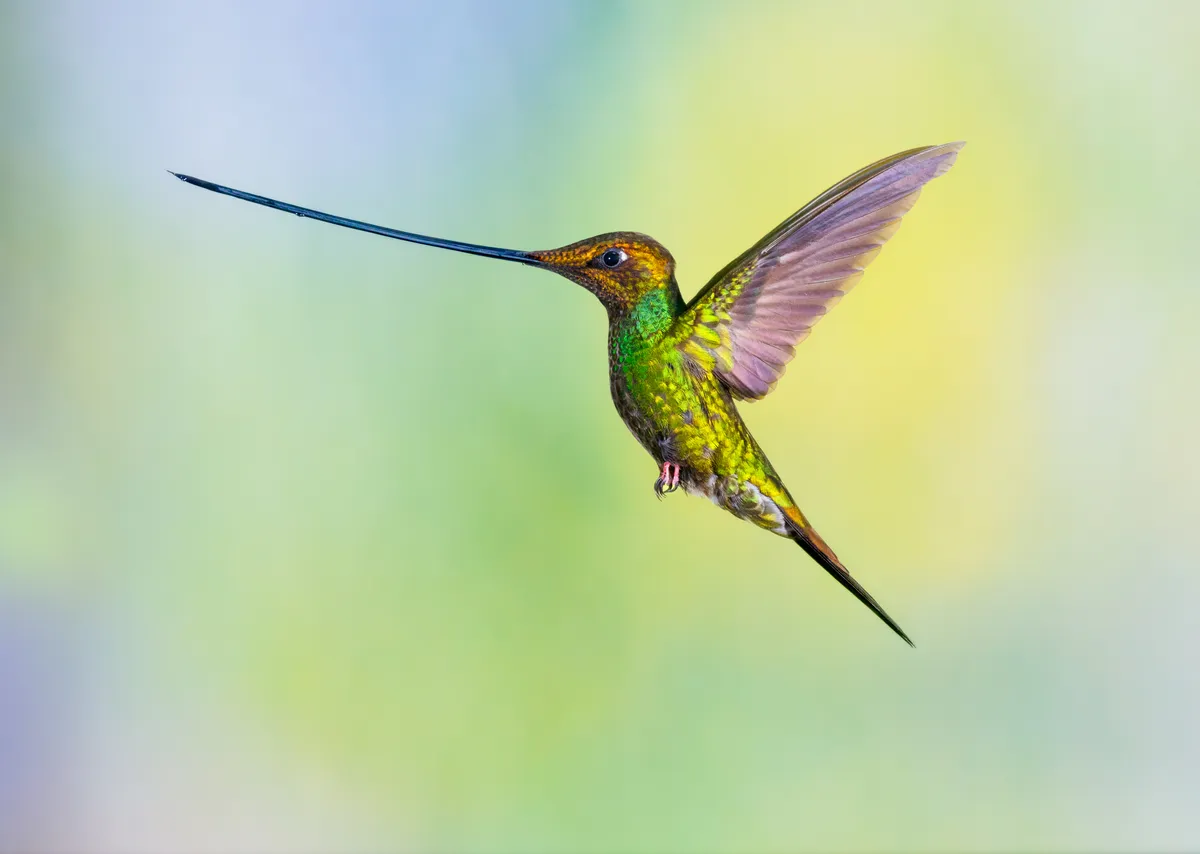
What does a hummingbird nest look like?
It shouldn't come as a surprise to find out that hummingbird nests are small, but it's incredible quite how tiny they are – smaller species nests are no bigger than half a walnut shell!

Typically hidden away in the fork of a branch, along a thin twig or buried deep inside a protective bush, hummingbird nests aren't always easy to find. But these miniature architectural wonders made of lichen, moss and spider silk are well worth seeking out.
Occasionally hummingbirds nest in more unusual places, like on top of wind chimes or even balanced on a washing line!
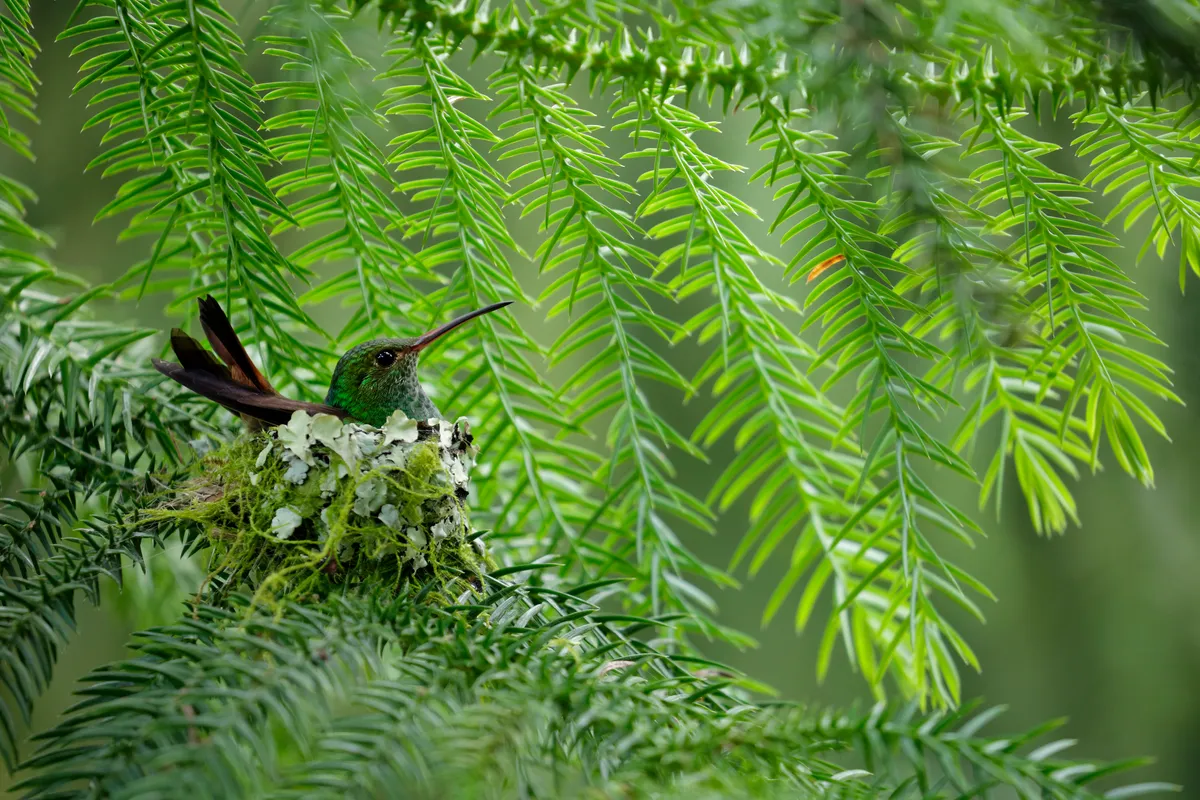
How fast do hummingbirds flap their wings?
Hummingbird species flap their wings at different speeds, with the giant hummingbird’s wings beating as few as 12 beats per second. Many species flap their wings between 50-80 beats per second, making them a blur to the human eye. But that's actually slow for a hummingbird! When they dive, they can flap their wings up to 200 times per second.
Their unique wings have made hummingbirds the most manoeuvrable birds on the planet - they're the only ones that can fly backwards, and the only ones that can hover for such long periods of time because of their ability to move their wings in a figure-of-eight pattern.
How fast is a hummingbird's heart rate?
A hummingbird's heart rate can reach over 1200 beats per minute - more than 20 beats every single second! Their hearts are far too small for us to hear their heartbeats, but if we could, they'd be beating so fast that it would just be a high-pitched hum to us.
Do hummingbirds have any predators?
They might be the most agile birds in the world, but that doesn't mean hummingbirds are safe from predators. Because they're so small, the list of hummingbird predators is actually pretty long.
Reptiles like snakes and lizards will happily strike out and eat hummingbirds, as will large frogs or even fish that jump clear out of the water to catch their prey.
Other birds will also eat hummingbirds - small birds of prey like kestrels will kill them, as will shrikes, corvids and roadrunners.
Don't forget invertebrates either, as large praying mantises will grab a passing small hummingbird, and hummingbirds can even get caught in the sticky webs of orb-weaver spiders.

Hummingbirds aren't even safe at night, as bats and owls will both eat any they find roosting in the dark.
How long do hummingbirds live for?
A typical wild hummingbird lifespan is 3-5 years, but the oldest known individual reached 12 years, and they've been recorded living up to 14 years in captivity.
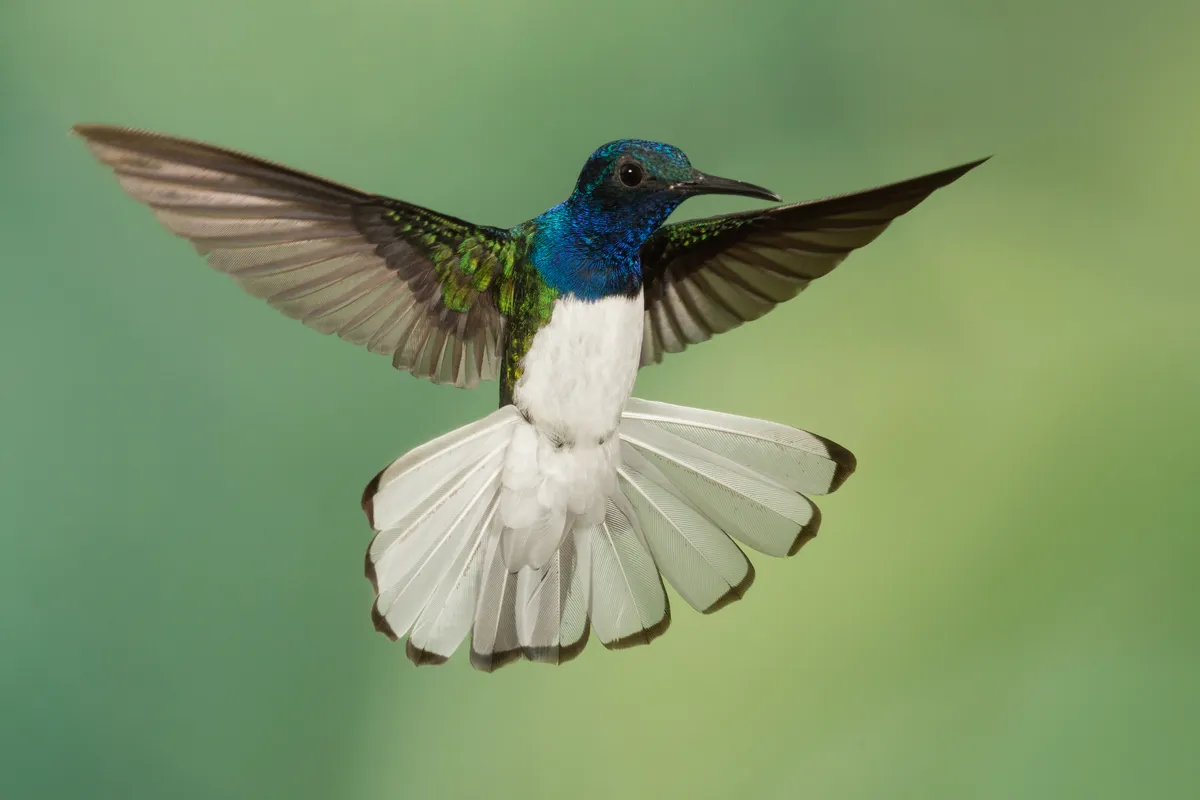
Hummingbirds have extremely fast metabolisms, so they're always hungry! They need to consume around half their own bodyweight every day, which is mostly made up of nectar, but also small insects and spiders.
In fact, hummingbirds need to eat such a ridiculous amount that they'd starve overnight if they slept in a normal way. Instead, they go into a deeper state of sleep that's more like a mini hibernation called torpor, where their metabolism slows right down so that they can get through the night.
How far do hummingbirds migrate?
Many hummingbirds spend the winter in Central America before migrating northwards for the breeding season in spring. Their migrations seem to be triggered by the position of the sun in the sky and the length of the days, and individual birds will often leave or arrive on their breeding grounds on almost the exact same day every year.
Rufous hummingbirds have the longest migration of all, traveling more than 6000 km between Mexico and Alaska.
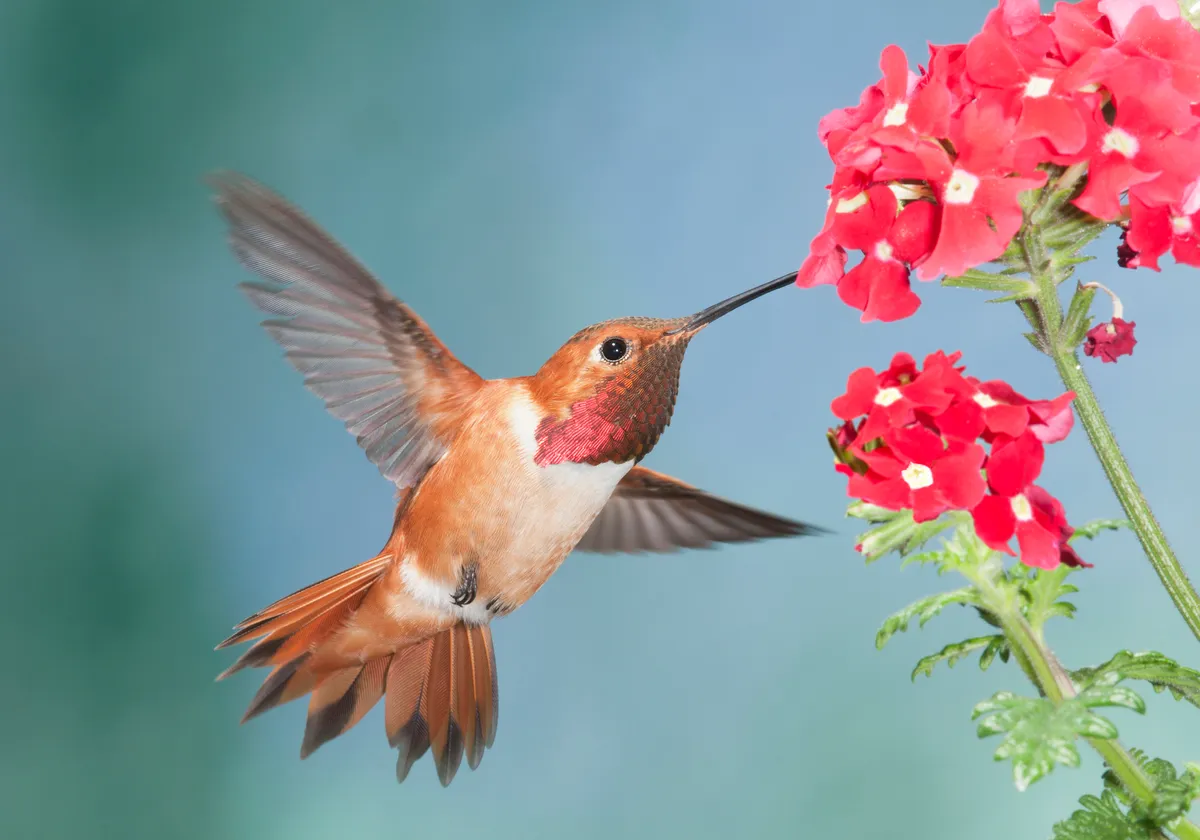
But perhaps even more impressive is the ruby-throated hummingbird, which flies 800 km nonstop across the Gulf of Mexico. While that might not be a lot for many birds, it takes these hummingbirds 20+ hours to make the crossing - a remarkable feat for a bird that must normally eat 5-8 times every hour to avoid starvation.
How fast is a hummingbird's tongue?
Hummingbird tongues are a true evolutionary marvel. We've only recently found out how they work by using purpose-made transparent feeding tubes and high-speed video cameras.
It turns out that hummingbirds use their tongues as elastic 'micropumps', which work in a similar way to how we drink from straws. Only they use elastic energy stored at the base of the tongue to bring up nectar, rather than creating a vacuum in a straw like we do. It’s more like how we take up liquids using a squeezy pipette.
And this is going on at seriously high speed - a hummingbird's tongue will go in and out of a flower up to twenty times per second!
Are hummingbirds endangered?
Currently, about ten per cent of hummingbird species are listed on the IUCN as either Critically Endangered, Endangered or Vulnerable.
In all instances a big contributor to their status is habitat loss and destruction. Another major concern for hummingbird conservationists is the potential effects of climate change on the birds food supply and migration routes.
However, as garden favourites for many people in the USA, some species are benefiting from people using bird feeders and planting hummingbird friendly flowers.